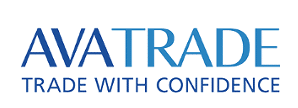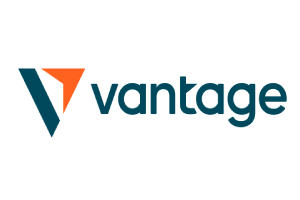Silver just got a massive upgrade in Washington’s eyes. For the first time ever, the US Department of the Interior wants to add silver to its Critical Minerals List for 2025. This is a critical signal that could spark the next precious metals rally.
The proposal sits in a 30-day comment period right now. But smart money doesn’t wait for final stamps. They position early when the writing hits the wall.
Department of the Interior Releases Updated Draft List of Critical Minerals for 2025 — adding: SILVER
Inclusion on the list can make projects eligible for federal funding, subject to a streamlined permitting process, or more competitive due to fees placed on imports. (Reuters) pic.twitter.com/BmGOxFtKGn
— Peter Spina ⚒ GoldSeek | SilverSeek (@goldseek) August 25, 2025
What Critical Mineral Status Means
When Washington labels something “critical,” prices tend to explode. The government essentially admits that without this material, the American economy faces real vulnerability.
We’ve seen this at play before. Uranium provides the perfect case study. After the Fukushima disaster in 2011, uranium prices crashed hard. The metal traded around $25 per pound for most of the 2010s. Mines closed down, and investors fled.
Then 2018 happened. The US quietly added uranium to the Critical Minerals List. That single decision opened the floodgates.
By 2020, officials recommended a national uranium reserve. Congress funded it with $75 million in 2021. The Defense Production Act kicked in by 2022.
Uranium prices responded accordingly. From roughly $30 per pound in 2020, the metal shot past $100 by 2024. A more than 200% gain in four years.
Lithium tells an even wilder story. Battery-grade lithium carbonate cost about $7,000 per ton in the mid-2010s. Most people outside Tesla fanboys ignored it completely.
The 2018 Critical Minerals designation changed everything. Money poured in. Automakers signed long-term supply deals. The Department of Energy opened loan programs. And the Inflation Reduction Act added billions more in subsidies.
By late 2022, lithium wasn’t $7,000 per ton anymore. It hit $80,000. That’s more than a 1,000% increase. Even after cooling off, lithium still trades at multiples of pre-designation levels.
Silver’s Unique Supply-Demand Dynamics
Silver brings something different to the table. It’s bigger than the uranium and lithium markets combined. But size doesn’t make it harder to corner.
The supply situation looks increasingly tight. Global demand hit 1.16 billion ounces in 2024, while mines only produced 820 million ounces. That’s a massive deficit of over 300 million ounces.
This shortfall isn’t new either. Silver has run deficits for four straight years. The gap keeps widening, not shrinking. Above-ground stockpiles only cover two to three years of current demand. Much of that sits locked in ETFs and private vaults.
Unlike gold, silver doesn’t just sit pretty in jewelry boxes. It gets consumed in solar panels, electric vehicles, semiconductors, and medical devices. Once it’s used, it’s gone forever.
Recent buying patterns show institutional interest building. Tech billionaire David Baitman recently took delivery of 12.7 million ounces. That represents about 1.5% of total annual global production.
Also, Saudi Arabia’s central bank disclosed a $40 million ETF position.
In most commodity markets, these numbers barely register. But in Silver’s concentrated market, they create real impact.
Investment Opportunities Ahead for Silver
Physical silver offers the most direct exposure to price movements. Coins and bars provide tangible assets that investors can hold. However, storage and insurance costs can eat into returns over time.
Mining stocks provide leveraged exposure to silver price moves. Senior miners like First Majestic and Hecla Mining offer established operations. Junior miners can multiply gains when prices rise. But they also amplify losses during downturns.
That said, ETFs offer easier access for retail investors. They eliminate storage concerns while maintaining price exposure. Popular options include SLV and SIVR for US investors.
Finally, Washington doesn’t add materials to critical lists for fun. They run sophisticated disruption models across energy, defense, healthcare, and technology sectors. Only commodities that could break essential systems get elevated status.
Silver already faces structural deficits. Critical mineral designation would add government stockpiling to existing industrial demand. Subsidies could boost domestic production, but new mines take years to develop.
The setup mirrors uranium and lithium perfectly. Immediate demand increase meets constrained supply. Prices have nowhere to go but up when basic economics takes over.
Interested In Trading The Market With A Trustworthy Partner? Try Eightcap Today.
- Broker
- Min Deposit
- Score
- Visit Broker
- Award-winning Cryptocurrency trading platform
- $100 minimum deposit,
- FCA & Cysec regulated
- 20% welcome bonus of upto $10,000
- Minimum deposit $100
- Verify your account before the bonus is credited
- Fund Moneta Markets account with a minimum of $250
- Opt in using the form to claim your 50% deposit bonus
Learn to Trade
Never Miss A Trade Again

Signal Notification
Real-time signal notifications whenever a signal is opened, closes or Updated

Get Alerts
Immediate alerts to your email and mobile phone.

Entry Price Levels
Entry price level for every signal Just choose one of our Top Brokers in the list above to get all this free.



